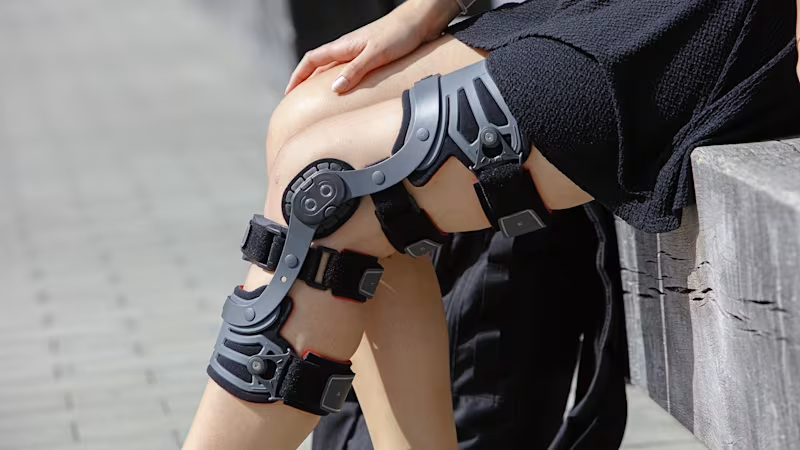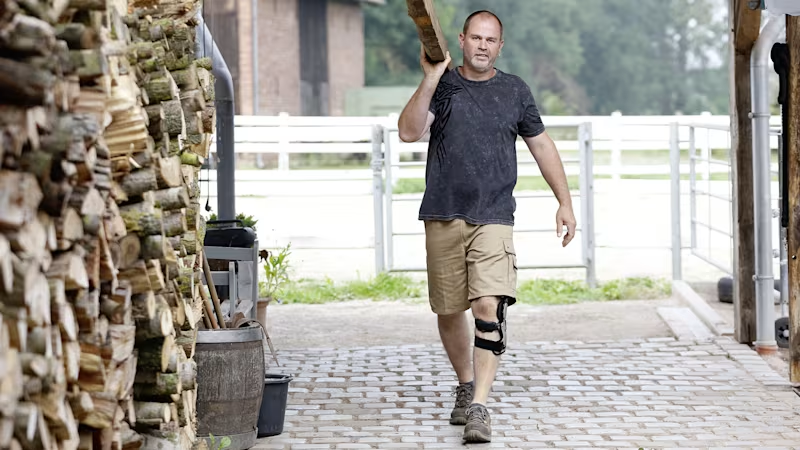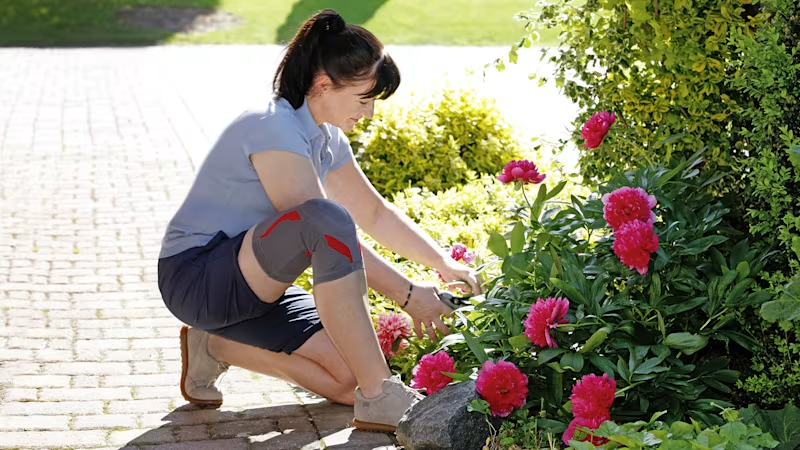


Leg and knee orthotics
Ottobock leg orthotics and knee orthotics help to stabilize impaired limbs and joints and relieve pain.
Ottobock leg orthotics and knee orthotics help to stabilize impaired limbs and joints and relieve pain.
Reclaim your mobility with a knee or leg orthotic
Our legs and knees put in an incredible performance every day. One moment they’re carrying us from A to B, the next they’re transporting us up and down stairs with no outside help. But as is so often the case in life, we rarely realize just how much we need our lower limbs to move about until they no longer function properly. In fact, illnesses that affect our joints, such as osteoarthritis of the knee, or injuries, such as torn ligaments, are not only painful but can also severely impact our mobility. If you have pain or mobility restrictions affecting your locomotor system, regardless of whether the problem is temporary or long-term, an orthopedic device such as an Ottobock knee orthotic or support can help by easing the strain and stabilizing or mobilizing the affected area.
What are knee orthotics and supports?
Knee orthotics and supports are orthopedic devices that offer protection, support, and pain relief to people affected by disorders of the locomotor system. They ensure that your legs or knees are optimally supported, stabilized, relieved, and mobilized. There are also special orthotics that are designed to immobilize the entire leg. Knee orthotics include rigid functional elements such as rods, joints, or stirrups made of plastic or metal. They can also include flexible elements. Flexible fabrics are used for knee supports. Everyday knee supports are made of elastic fabrics and often include elastic inserts called pads. The pads support the affected joint and use compression to reduce irritation, swelling, and edema.

Different uses for knee orthotics and supports
Wearing a knee orthotic can be beneficial for a wide range of diagnoses. Leg orthotics are often prescribed for functional injuries and for diagnoses such as osteoarthritis of the knee or torn ligaments, among others. They help to support joints, for example, and can also partially or fully mobilize the affected body area. Knee braces such as the Ottobock Agilium Freestep 2.0 and Agilium Reactive have also proved beneficial in treating osteoarthritis of the knee. Knee supports, on the other hand, are a common choice for sports-related activities. Supports such as the Genu Sensa offer freedom of movement while also supporting the joint if your knee feels painful or weak. Elastic supports also help to reduce swelling, effusion, and inflammation. Knee orthotics can also be used as devices that provide extra stability and protection even after a sports injury has healed.

How do I wear my knee orthotic?
Knee supports and knee orthotics are orthopedic devices that are put on and fastened on the affected body area – over your clothing and directly on the skin. The device is positioned on the body part in question and fixed in place via hook-and-loop closures, straps, or plastic clips. In terms of shape and size, an orthotic should fit perfectly and not feel too loose or too tight. Because if the device doesn’t fit properly, the knee orthotic can’t perform its function – and at worst, it could even affect your blood circulation and cause swelling and pain. So the key to success lies in achieving a snug yet comfortable fit. This is why it’s so important to always seek advice from your doctor and an O&P professional when choosing an orthopedic product.
How long should I wear my knee orthotic?
In general, you can wear your orthopedic product for as long as you and your doctor find necessary. During the initial phase of treatment for an injury, you should follow your doctor’s instructions about wearing the product very carefully. Orthotics are generally not worn at night, but in exceptional cases, your doctor may explicitly instruct you to do so. If you experience any pain or discomfort, you should contact your doctor to clarify the cause. Once a knee joint injury has healed, you can continue wearing your knee support or orthotic. It can protect you from straining or overexerting your knee in such cases. Depending on the severity of the injury, you may need to visit your doctor for regular checkups.

Back to everyday activities: three steps to an Ottobock orthotic
- Here you’ll find an overview of all the orthotics and supports that could potentially help you. Take the list with you to your next doctor’s appointment.
- Talk to your doctor about which orthotic is best suited to your symptoms and condition. Your doctor can then write you a prescription for the appropriate orthotic.
- Take your prescription to a medical supply company. They’ll give you your new orthotic and adjust it to fit your exact body measurements.